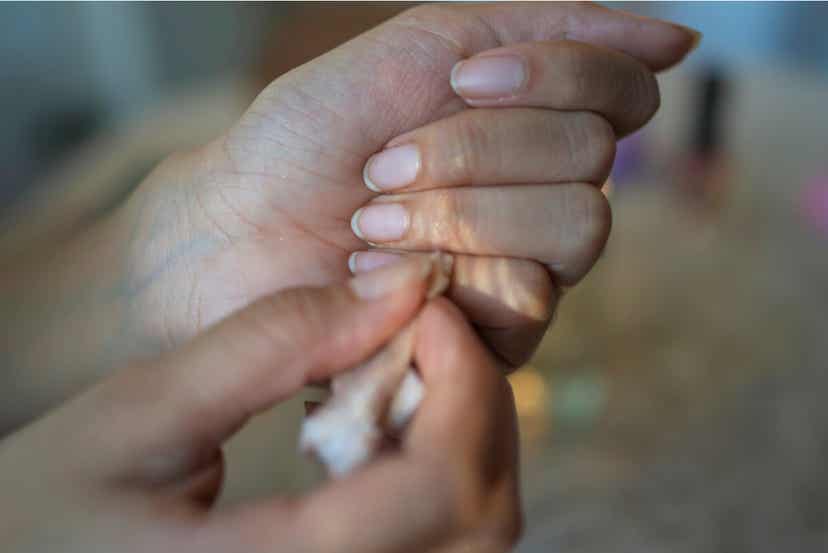How to Remove Silicone From Clothing
When doing crafts or simple home repairs, it’s possible for your clothing to get stained with paint, oils, glues, or other materials that are hard to remove from fabrics. Thus, many crafters have wondered how to remove silicone without damaging your clothing by tearing off the glue.
Fortunately, you can solve this problem without leaving a trace of what happened. It all depends on how fast you act and the trick you use.
Don’t know any?
Then you’ve come to the right place!
Tricks to remove silicone from clothes
Due to its practicality and characteristics, silicone is one of the most used products for gluing at home. The same’s true in the professional field, as reported in a Chemical Safety Facts publication, which highlights the key role of this material in different segments of the economy.
Its presentation is colorless, impermeable, and biocompatible. For handicrafts and small domestic repairs, it can be found in bars, liquid, cold, or hot (which involves melting it with a heat gun).
It’s in such scenarios that, due to carelessness, drops fall clothing or other fabric. With the following recommendations, you’ll reduce the time you spend on cleaning, while also taking care of your garments.
You may be interested in: Five Products to Remove Oil Stains from Clothes
1. Use paper and iron
This trick’s ideal when you want to remove silicone that’s still in its liquid form. In other words, the stain has to be recent.
Remove the garment and spread it out on a smooth surface. Cover it with a sheet of toilet paper or paper towel that’s absorbent enough to withstand the heat of an iron.
This is because the next step is to run the appliance over medium heat on the paper for one minute. Then, check if the silicone adhered to the sheet or if you need to repeat the procedure.

Discover: What Types of Clothes Irons Are There?
2. The magic of ice
The secret here is that when ice comes in contact with the glue, it ice hardens it, making it easier to remove.
Place the ice cube right on the stain and leave it for a few minutes while the glue freezes. Then, remove it using your fingernails, a spatula, a knife, or some other utensil, always being careful not to ruin the fabric.
This technique works on cotton, linen, and even synthetic fabrics. Considering the effect of the cold on the fabric and the dry glue, you can also place the garment in the freezer and wait a while before proceeding to peel it off.
3. Use a solvent to remove silicone
There’s a special solvent that removes cold or fresh silicone from fabrics and other surfaces. Just follow the steps indicated on the package.
Generally, it consists of smearing the product on the stain and allowing it to act for about 5 minutes. After that time, you remove it with a soft brush, a knife, or any other utensil.
4. Acetone and alcohol: An effective combination
Mixing these two liquids is the way to go when the stain has dried a long time ago and the garment is black. Mix equal amounts of 70 or 96% alcohol with acetone or nail polish remover and pour it on the silicone.
With a cloth, rub the affected part of the garment and check if it comes out. At the same time, check the condition of the fabric. Once the silicone softens, remove the remains with the help of a rounded tip knife, your fingernails, or a small trowel.
5. Gather it with a spoon
For this technique, you have to be quite agile, because you have to act as soon as the glue falls. Take advantage of the fact that it’s soft and drag the spoon over it to remove as much as you can. A table knife’s also useful.
If the silicone’s dried a little, you’ll have to combine this method with any of the others techniques we’ve explained above.
6. White gasoline or turpentine
More than likely, one of the previous tricks will work. However, in the case that they don’t, you can resort to white gasoline or mineral turpentine.
They act as a solvent once they land on the garment. Whichever you choose, you can put it on directly with a soft bristle brush or, if you prefer not to risk it, with a cloth. Rub for 5 minutes or until the spot’s no longer visible.
Things to avoid when removing silicone from garments
Besides getting rid of the stain, not spoiling the clothes is what you’re looking for when removing silicone using chemicals or utensils. The success of the tricks lies in not making mistakes, such as scrubbing. It’s likely to be your first reaction, but you’ll only spread the silicone out.
Don’t wet the garment right away either, as this will solidify the glue, rather than removing it. It’s better to wait for it to dry on its own and follow some of the tips we’ve already suggested, such as acetone, an iron, or ice.

Basic precautions to remove silicone from fabrics
Silicone’s a delicate substance, as are the products used to remove silicone from the fabric. Because of this, there are certain precautions you shouldn’t overlook:
- To make sure that the products you’re using won’t fade or damage delicate fabrics, test the mixture of nail polish remover and alcohol or solvent on an inconspicuous place on the garment.
- Wash the garment with regular detergent and air dry. Remember not to scrub.
- If the stain’s especially stubborn, soak a sponge with soap and try to remove the remains without damaging the fabric.
- Be sure to use gloves and a mask when handling white gasoline, turpentine, or other solvents, as there’s a risk of poisoning or skin damage.
Finally, the best advice for not ruining your clothes when working with silicone is to opt for old clothes, the kind you no longer wear when going out. That way, there’ll be no regrets.
All cited sources were thoroughly reviewed by our team to ensure their quality, reliability, currency, and validity. The bibliography of this article was considered reliable and of academic or scientific accuracy.
- Siliconas. Chemical Safety Facts. American Chemistry Council. Washington. https://www.chemicalsafetyfacts.org/es/siliconas/
- Castro Neira M. Intoxicaciones con productos domésticos. Servicio Navarro de Salud. Libro electrónico de Toxicología clínica. España. https://www.navarra.es/appsext/DescargarFichero/default.aspx?codigoAcceso=PortalDeSalud&fichero=Toxicologia%5CIntoxicaciones%20por%20productos%20domesticos.pdf
This text is provided for informational purposes only and does not replace consultation with a professional. If in doubt, consult your specialist.








